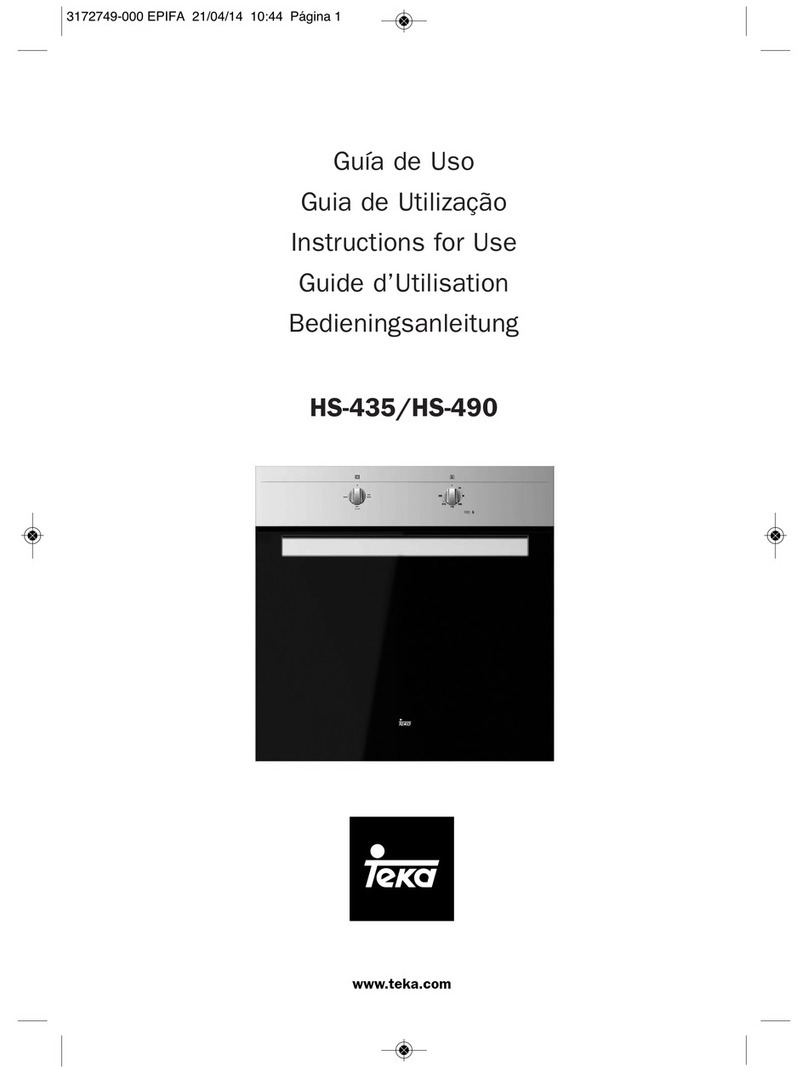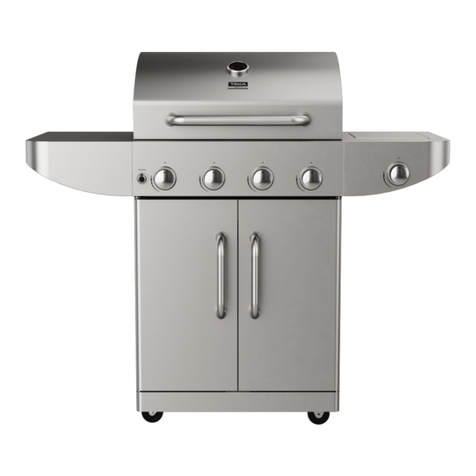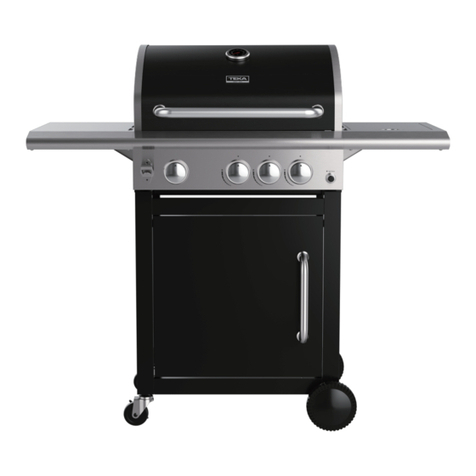
6
assembly.
4. Always turn the gas supply off on the gas cylinder or the
pressure regulator and disconnect the gas hose after use.
5. Never store gas cylinders indoors or close to heat sources.
6. Always store gas cylinders in the upright position, never in
a horizontal position which could cause the gas cylinder to
leak or the gas to leak into the gas hose.
7. Never use the appliance without the pressure regulator.
8. Only use pressure regulators approved for liquid petroleum
gas (LPG) and complying with national regulations.
GAS HOSE WARNINGS
1. Inspect the gas hose(s) prior to and after each use: look
for any cuts, cracks, excessive wear, or other damage. The
gas hose(s) shall be replaced every one to two years by
a qualified technician or the retailer only. Replace brittle
gas hoses and their connections. If in doubt, ask a local
specialist.
2. Protect the gas hose(s) against damages. Do not let
it/ them hang over sharp edges. Do not twist, squeeze
or bend it / them. Keep the gas hose(s) away from hot
surfaces and ensure that nobody can trip over it / them.
3. Only use gas hoses approved for liquid petroleum gas
(LPG) and complying with national regulations.
4. Every kind of work or replacement of the hoses is to be
conducted according to the manufacturer’s instructions by
qualified personnel or specialists.
5. The maximum length of the hose shall not exceed 1.5m.
IF YOU SMELL GAS
1. Never light the appliance if you smell gas.
2. Immediately turn the gas supply off on the appliance as well
as on the gas cylinder and / or the pressure regulator.
3. Extinguish all open flames near the appliance such as
candles and torches. Switch off all electrical appliances in
the surroundings.
4. Make sure the area is well ventilated with fresh air.
5. Open the cover of the appliance in order to let the
gas escape. Should you still smell gas, do not use the
appliance any longer and have it repaired by an authorized
professional only.
Safety Instructions
Danger! Risk of fire!
The barbecue parts become very hot during use
and can cause fire.
- Always have a ready-to-use fire extinguisher and a first aid
kit at hand in the event of an accident or fire.
- Place the barbecue on a secure, non-flammable, flat, level,
stable, heat-resistant and clean surface away from any
heat source prior to use.
- Ensure that the barbecue is set up at least 1 m away from
highly combustible materials such as awnings, wooden
terraces or furniture.
- Do not move the barbecue during use.
- Some foods produce flammable fats and juices. Clean the
barbecue on a regular basis, preferably after each use.
- Do not leave the operating barbecue unattended.
Danger! Risk of fire!
Never attempt to switch on/light the barbecue
with the lid closed.
- Only operate the gas barbecue with the lid closed at a low
flame.
Danger! Risk of burns and accidents!
This appliance is not intended for use by persons
(including children) with reduced physical, sensory
or mental capabilities, or lack of experience and/or
knowledge.
- This group of people must be informed about the dangers
associated with the use of the appliance and must be
supervised by a person responsible for their safety.
- Supervise children at all times to ensure that they do not
play with the appliance.
- Any modifications to the product may be extremely
hazardous and are therefore prohibited. Do not attempt
to make unauthorized modifications to the appliance. In
the event of damage, repairs or other problems with the
barbecue, please contact our service center or a local
dealer.
- Keep the appliance away from children and pets.
Do not touch the barbecue, flame burner and food being
grilled during use as they become extremely hot and can
cause severe burns.
- Keep sufficient distance from hot parts since any contact
can cause severe burns.
- Always wear barbecue or oven gloves (e.g. Category II
heat-resistant gloves rated according to DIN-EN 407) when
grilling.
- Use only long-handled barbecue utensils with heat-
resistant grips.
- Do not wear clothing with wide sleeves.
- Allow the barbecue to cool down completely before
cleaning it or stowing it away.
Danger! Risk of deflagration!
When poured into the flames, flammable liquids
create flashes or deflagrations.
- Never use flammable fluids such as gasoline or spirit.
Danger! Risk of poisoning!
Gas is odorless and can be deadly in enclosed
spaces!
- The barbecue is intended for outdoor use only.
Danger! Health risk!
Do not use paint solvents or thinners to remove
stains. These substances are hazardous to health
and must not come into contact with food.
Danger! Risks to children!
Children playing with the packaging film can get
caught in it, which can result in suffocation.
- Do not let children play with the packaging film.
- Do not let children put small assembly parts into their
mouths as these present a choking hazard. The parts can
cause choking if swallowed.


































